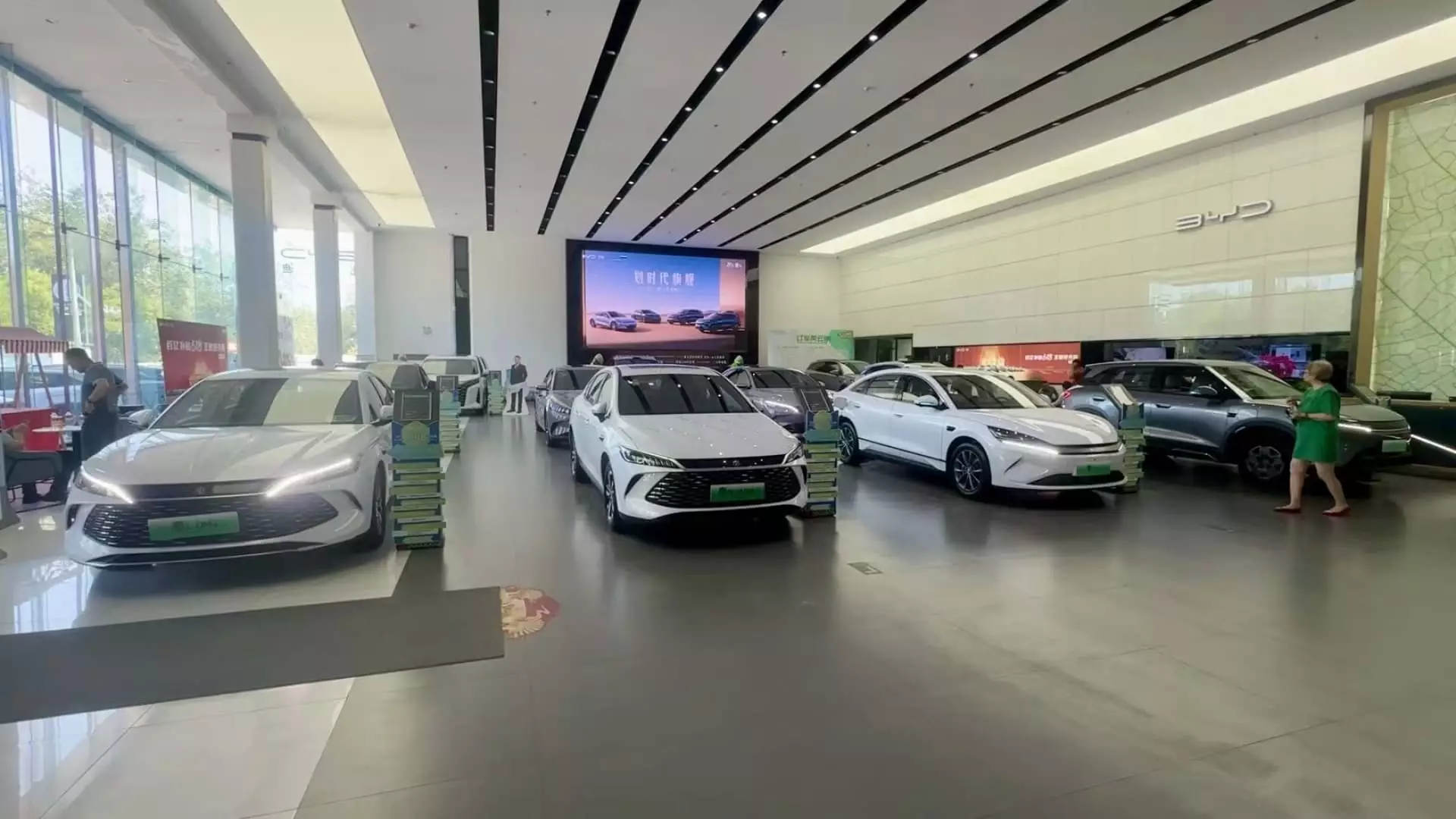In the fierce battle for dominance within China’s electric vehicle (EV) industry, a troubling pattern is emerging. Salespeople like Ma Hui at Beijing’s used car market are ringing alarm bells, forewarning of a disastrous outcome driven by excessive competition and unsustainable pricing strategies. While many might see a price-cutting spree as a consumer-friendly trend, this sort of brinkmanship is resulting in a toxic environment for both manufacturers and sellers, thus raising critical concerns about the future of the industry. Far from stimulating the economy, the desperation to sell cheaper vehicles is mirroring a self-destructive spiral that could lead to dire long-term consequences.
The Bleak Reality of Price Wars
The ongoing price war—championed by the likes of BYD, the market leader—has escalated into a chaotic frenzy where significant price cuts have become the norm. Striking discounts, such as a staggering 34% reduction on some models, are not merely marketing tactics; they are indicators of a deeper malaise. Such aggressive pricing is damaging profit margins across the board, leaving both executives and sales personnel overwhelmed. The People’s Daily, a government-backed publication, has voiced the latent angst within this landscape, labelling these “disorderly price wars” as detrimental to the entire ecosystem. As the warning signs of diminishing income ripple through the industry, it raises a crucial question: Is this truly a sustainable path forward?
Industry Giants and Their Follies
BYD isn’t just facing scrutiny from used car salespeople like Ma; it is also attracting fierce criticism from industry executives and regulatory bodies who recognize the perilous implications of this price slashing. The chairman of Great Wall Motor drew a chilling parallel between the current automotive crisis and China’s former real estate titan Evergrande—both scenarios depicted as teetering precariously on the edge of disaster. His invocation of the Evergrande collapse serves as a dire warning: the automotive sector may soon face a similar reckoning, ensnared in its own peculiar economic pitfalls.
The frantic actions of manufacturers reflect an underlying desperation and signify a broken system rather than an innovative market. When profit margins are sacrificed on the alter of competition, the entire industry suffers. The response to this trend from the China Association of Automobile Manufacturers further exemplifies the discontent brewing within the sector. Their admonitions about “dumping” vehicles at unsustainable prices target BYD but also resonate deeply with the struggles of smaller players who may find themselves unable to keep pace.
Consumer Behavior in a Down Economy
While it may be tempting to view lower prices as a boon for the consumers, reality paints a more complicated picture. With continual cuts driving down prices, potential buyers may become paralyzed, waiting for the “next big deal.” This hesitance is exacerbated by broader economic stagnation, which cultivates a culture of uncertainty among consumers. As Ma noted, the phenomenon of “zero mileage used cars”—vehicles registered but never driven—demonstrates the lengths to which manufacturers will go to inflate sales figures. This obfuscation not only misrepresents the market but also breeds mistrust among consumers.
As anxiety about financial stability grows, the effect of consumer reluctance could ultimately choke the life out of the industry. What seems like a tactical efficiency from the manufacturers’ standpoint instead risks alienating buyers, many of whom now question the long-term viability of their investment in an over-saturated market. The reluctance to spend in a faltering economy, coupled with fears of diminishing returns due to volatile pricing, represents a grim outlook not just for auto manufacturers but for the economy as a whole.
A Looming Crisis
The aggressive pursuit of market share through price slashing has not only destabilized manufacturers but also threatened the livelihoods of countless individuals within the sector. The conversations happening inside used car markets and boardrooms alike signal that a reckoning is nearing; the industry must reconsider its approach. In doing so, China’s EV market stands at a crossroads, one which ultimately could contribute to either a future of innovation or a collapse driven by shortsightedness. The battle lines have been drawn, and it’s imperative for stakeholders to recognize the need for strategic, sustainable change before they spiral into an abyss of their own making.

